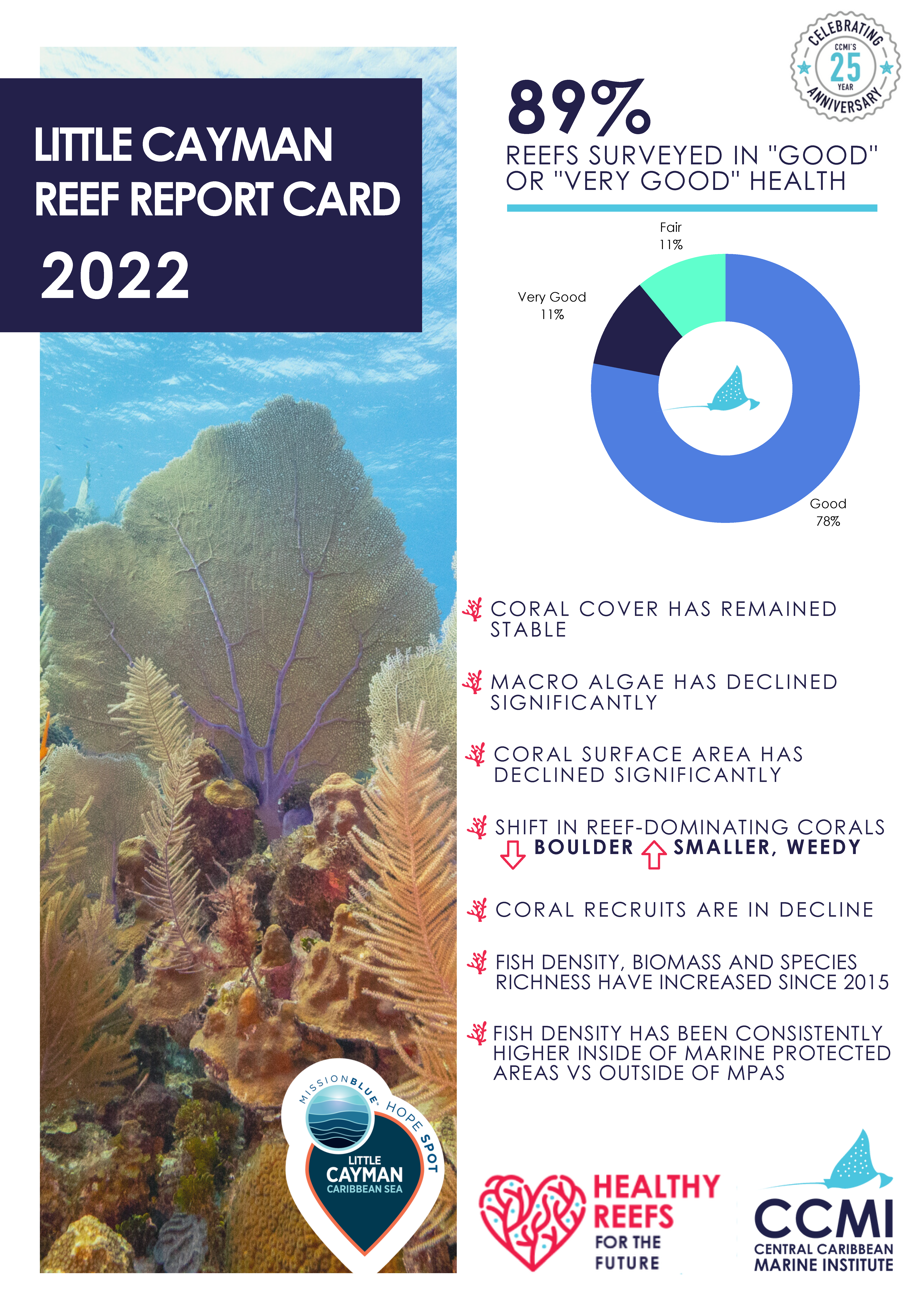Little Cayman’s Reefs Continue to Indicate Resiliency: 24 years of CCMI Surveys Show Healthy Fish and Vulnerable Coral
The Central Caribbean Marine Institute (CCMI) released their annual Healthy Reef Report outlining key takeaways from their surveys of Little Cayman’s reefs, showing that 87% of the reefs surveyed are in “good” or “very good” health. The diverse and healthy marine life which populate Little Cayman’s unique underwater topography have elevated Little Cayman’s Marine Protected Areas to be one among only seven sites in the UK and overseas territories to be advanced for UNESCO World Heritage Site consideration. This report provides insight into life on the reefs, comparing the state of coral and fish populations to 24 years of data collected using the same methods. CCMI’s Healthy Reef Report Card also highlights areas of concern that render the reef vulnerable to global threats, which would disrupt key services the reef provides like serving as a strong storm break and providing a complex home for many marine creatures.
Little Cayman’s reef ecosystem benefits from low human impact and strong local protection which contribute to overall reef health. In 2022, fish surveys showed positive news with increasing trends in overall fish density (number of fish), biomass (size of fish), and species richness (different types of fish). There are nearly double the number of fish surveyed in 2022 than there were in 1999, and roughly three times the total biomass, indicating that there are more fish and larger fish on the reefs surveyed. When evaluating the overall health of Little Cayman’s reefs, increasing fish biodiversity (species richness) is particularly encouraging as biodiversity is crucial for the health and resilience of complex reef ecosystems. These increases appear to be an effect of strong protection by the Cayman Islands government, namely significant protection aimed at the Nassau grouper population enacted in 2016 and expansion of Marine Protected Areas (MPAs) in 2021. Nearly 75% of Little Cayman’s surrounding reefs are now marine protected areas. CCMI’s long-term survey data reflects that year after year, there is higher biomass inside MPAs than outside of the MPAs, and there is a positive effect on the fish populations overall because of the strength of these local protections. Major increases in 2020 and 2021 may have been further influenced by COVID-19 and reduced overall activity on the reef.
Surveys show that while coral cover remains consistent, there are shifts in the species which dominate the reef. There are more small, weedy corals and a reduction in size of corals overall. These shifts in dominant species and declining recruitment are taking place in Little Cayman as they are throughout the Caribbean region. If there is a significant bleaching event (ever more likely in currently warming ocean conditions and in El Niño years, like 2023) the coral populations are at great risk as there are so few recruits (baby corals) found on the reefs.
Humanity is dependent upon the health of coral reefs, particularly in low-lying islands like the Cayman Islands. More research into coral resiliency is urgently needed and a priority at CCMI, so that we may understand how corals may survive in the changing global climate and future threats.
Read the 2023 Reef Report Card on our Healthy Reefs page.
BACK
 CONTACT
CONTACT gallery
gallery facebook
facebook instagram
instagram youtube
youtube twitter
twitter